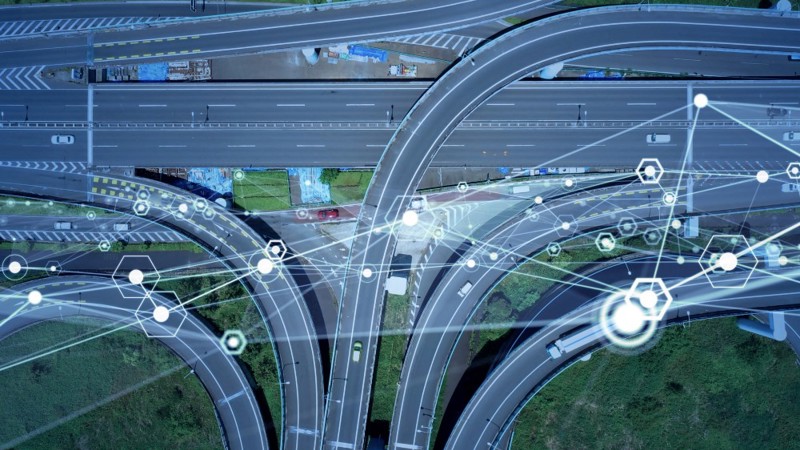I’ve been working in logistics for more than two decades, and I think it’s safe to say that digitalization and visibility have never been higher on the industry’s agenda – from the board-level down.
The pandemic prioritized and accelerated digital transformation projects that once would have taken years to complete, with many logistics companies already enjoying the enormous benefits of using data to streamline and optimize their operations.
But access to data is only one part of the equation. To successfully navigate this new normal and respond to disruptions from a position of strength, information must be current to be actionable, and it ideally needs to be available via a centrally managed, single logistics record.
What is supply chain visibility?
Supply chain visibility refers to tracking products and goods in transit, giving a clear view of all inventory and activity.
In simpler terms, imagine you get to the end of a book, and you realize there’s a page missing from the nail-biting conclusion.
Supply chain visibility is similar: both you and your customers can’t operate effectively with a fractured or incomplete view of all shipments.
Why has visibility become such a buzzword for the logistics industry?
With the virus sadly still a live threat and several countries and economies in lockdown, the pandemic continues to have profound and long-lasting impacts on how we work and the way global supply chains function.
For instance, recent research1 reveals that the shift to online shopping triggered by the pandemic isn’t slowing down, with global ecommerce sales reaching USD876 billion in the first quarter (up 38 percent year-on-year).
From my conversations with customers and other logistics leaders, there’s clearly an acute and growing need for complete visibility of a shipment’s lifecycle – in as close to real-time as possible.
That’s because businesses and individuals alike want their goods faster, with more transparency, and of course at the most competitive price. In fact, there’s probably never been more pressure on the logistics industry to do more with less, while moving more for less.
What are the benefits of increased visibility for logistics companies?
In most cases, good visibility leads to stronger and more agile supply chains. That’s because:
- With better visibility, you can move faster because you have a much better idea of what’s coming up.
- If you know what’s coming, you can mitigate potential disruptions ahead of them hitting.
- If you’re moving faster and proactively minimizing threats, you have more time for higher-value projects focused on improving customer service.
- You can look retrospectively at the impact of a particular supply chain disruption, and better model future impacts as well.
- Ultimately, you move from “fire-fighting” mode to a position of strength, where you can scale and flex assets and resources across different business portfolios, in response to whatever challenges you’re presented with.
How can technology improve your end-to-end visibility?
With supply chain disruptions an inevitable part of life, and remote work continuing for the foreseeable future, a single hub, platform or database is your most straightforward solution.
Specifically, one system capable of retaining and exchanging this data while offering a portal for all trading parties to monitor and maintain their supply chain: standard connectors, simple status updates, and global visibility from the one place.
Our secure, cloud-based logistics execution software, CargoWise, brings your branches, departments, workforce, and operations together in one deeply integrated global system.
It removes the need to run multiple, complex systems and ensures shipments are processed with speed and precision – from the initial quote and booking to customs clearance, transport, forwarding, warehousing, and the final invoice being issued to your client.
On top of this, it meets the growing demand for globally capable, highly productive logistics software that gives you the data and visibility you need to make fast and accurate decisions, in minutes, not days.
For example:
- Integration within and across modules in CargoWise means data is available immediately in other modules, thereby eliminating duplicate inputs and allowing real-time access across functions.
- Integration across geographies allows data to be instantly available across regions and translated across more than 30 languages and currencies.
- Integration with other customers enables logistics providers who interact with each other to benefit from improved productivity and greater operational visibility when they both operate on CargoWise - with data flowing through the one integrated system.
- Integration with other third-party systems provides customers with the flexibility to roll out CargoWise across their business while also enabling them to integrate with their other systems and other vendors’ products.
- Integration with government systems such as customs, quarantine, tax, food, drug and other government agencies drives enhanced electronic processing, faster turnaround time and reduced rework.
By sharing data in real-time across your operations and automating your processes as much as possible, CargoWise gives you and your customers the access and visibility needed to ensure cargo moves with greater ease along the supply chain.
1Adobe Digital Economy Index, April 2021.
Want to make better informed decisions to optimize your logistics operations? Find out how real-time data visibility in CargoWise can help you make more agile, customer-focused decisions. Learn more
Accelerate your time to go-live with help from the experts. Our global CargoWise Partner network helps customers, of all sizes, implement and configure CargoWise to suit your business needs. Find out how
